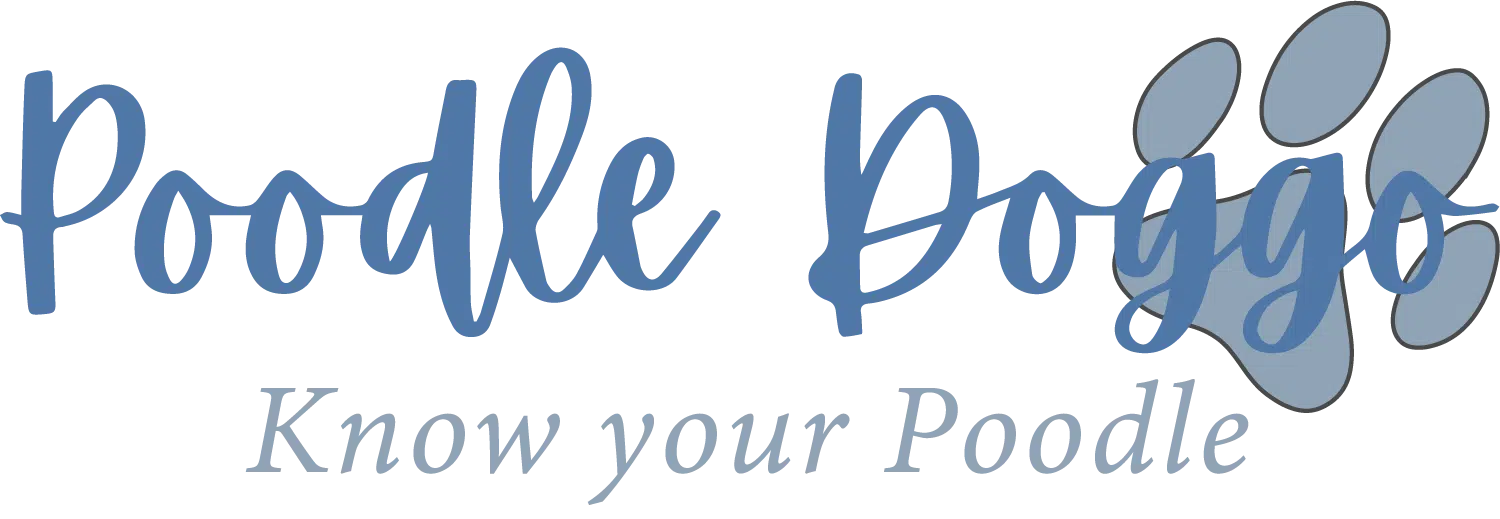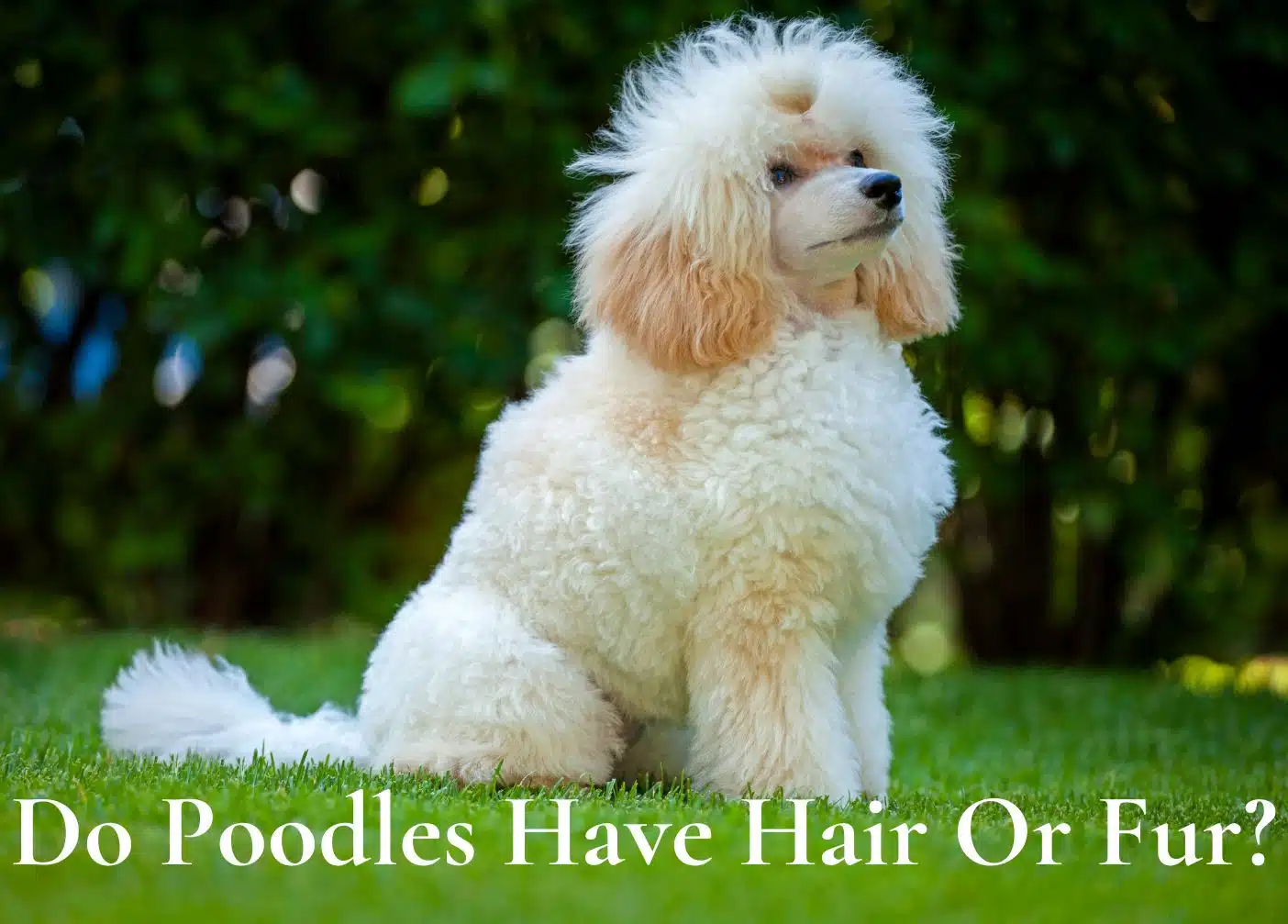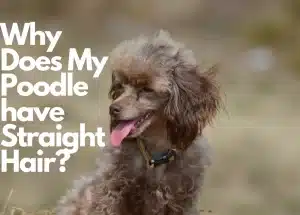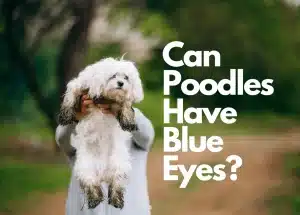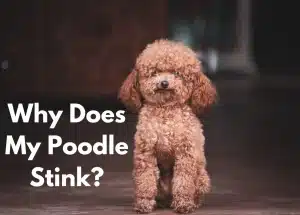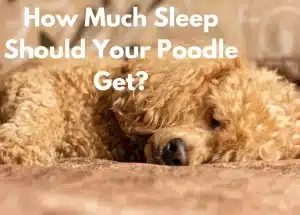Poodles are a smart and playful dog breed. They are known for their curly or wavy coats, which come in various colors, including white, black, apricot, and red.
One common question many people have about poodles is, “do poodles have hair or fur?”. Well, poodles have hair, not fur. Unlike most other breeds of dogs, poodles have a single layer of hair that grows continuously throughout their lifetime, much like human hair.
By the end of this post, readers will better understand the unique qualities of poodle hair coats and be better equipped to care for these beloved pets.
Table of Contents
ToggleDo Poodles Have Hair Or Fur?
Poodles are not furry animals because they have hair instead of fur. Only a few dog breeds, including poodles, are regarded to have hair rather than fur.
Poodle hair grows and usually doesn’t fall out in clumps unless underlying medical or hormonal issues exist. In comparison, a dog’s fur can only reach a particular length before it naturally falls off.
You might wonder, “What’s the difference between hair and fur?” They’re the same thing, right? Well, to an extent. Hair and fur differ in many subtle ways but are almost identical.
Read on to find out the difference between hair and fur.
Understanding The Differences Between Fur and Hair
Fur and hair are made of the protein keratin. They share comparable genetics as well. Differences in appearance, texture, and care are the only distinguishing factors.
Although fur and hair may appear similar, the two have some fundamental differences.
Structure Of Hair And Fur
- Hair is a long, slender, cylindrical structure that grows from a hair follicle embedded in the skin. Hair consists of 3 layers: the cuticle, cortex, and medulla.
- In contrast, fur is shorter and denser than hair, consisting of a double coat of two layers: the undercoat and guard hair.
Function Of Hair and Fur
- Hair mainly provides insulation and protection from environmental elements such as the sun and cold weather. It also provides sensory feedback, as in the case of whiskers.
- Fur is primarily designed for insulation, particularly in cold weather. It also plays a role in camouflage, as it can help animals blend into their surroundings.
Shedding Of Hair And Fur
- Most dogs with hair don’t shed as much as those with fur.
- When fur passes through a more rapid development cycle, it sheds more frequently and spreads more dander.
Texture Of Hair And Fur
- Hair is softer and can grow longer than fur. But it can get tangled quickly regardless of whether it is straight, curly, or wavy.
- Furry dogs are so soft because they have two layers of hair: a top hair coat and an undercoat. The fur is typically thicker but shorter than the dog hair.
Phases Of Poodle’s Hair Or Dog’s Fur Growth cycle

The typical hair/fur growth cycle can be divided into three main phases:
- Anagen Phase
- Catagen Phase
- Telogen Phase
After the telogen phase, the cycle starts with a new anagen phase. The length of each phase can vary depending on the dog and the type of hair/fur.
Note: The anagen phase of scalp hair can last several years, while the anagen phase of body hair may only last a few months.
Difference Between Hair And Fur Growth Cycle
A key distinction between hair and fur is the time spent in the anagen phase.
- Hair takes longer in the anagen phase, and the growth cycle slows.
- However, furry dogs must pass through this phase more quickly to shed fur properly and keep their coat in good condition.
Factors Influencing The Growth Phase Of Poodle Hair Or Dog Fur
A dog’s hair and fur development cycle may be influenced by many factors, such as
Age – The hair-growing cycle of a puppy coat is much shorter than an adult dogs. Hair and fur get longer and thicker with age because their growth cycle lengthens.
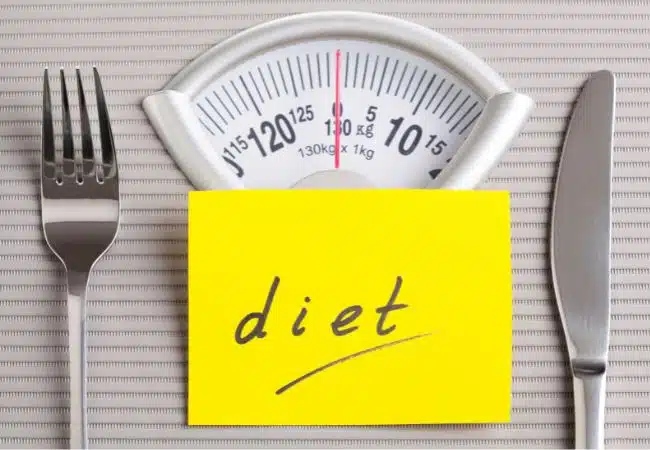
Diet – The growth rate and quality of a dog’s hair or fur can be affected by its food. Maintaining healthy hair requires a diet that supports growth and prevents breakage, and these can be improved by including plenty of protein, vitamins, and minerals in a pet’s food.
Health – Dogs who suffer from underlying health ailments, such as thyroid issues or allergies, are more likely to develop irregular hair growth or shedding than healthy dogs.
Season – Certain dog breeds’ fur coats change with the seasons. A dog’s coat, for instance, may grow thicker in the winter to keep the animal warm.
Is Poodle A Good Choice For Allergy Sufferers?
Poodle hair doesn’t shed as much as fur, so it is less likely to spread allergens around your home. Poodle hair also tends to trap dander and other allergens close to the skin.

However, no dog breed is fully hypoallergenic, and some people may still be allergic to poodle puppies despite their hair type.
Allergies are caused by a reaction to proteins found in the dog’s skin, hair, or saliva, so a person can be allergic to poodle fur/hair.
If you or your family has allergies, spending time around poodles before committing to owning one is essential. This can help you determine if you have an allergic reaction to poodle hair or not.
Advantages Of Owning A Poodle With Hair/Fur
Poodles are popular pets for many reasons, and one of their key features is their signature curly hair.
Here are some benefits of having a pet poodle with hair/fur:
Hypoallergenic
Poodles hair shed less than other dogs, and their hair/fur is less likely to cause allergic reactions. Their hair grows continuously instead of shedding, producing less dander that can trigger allergies.
Versatility
Poodles come in different sizes, from toy to standard, which makes them suitable for different living situations. They are also brilliant and trainable, which makes them amazing companions for people of all ages.
They are often used as therapy, show dogs, and even hunting dogs, as they have excellent hunting instincts.
Healthy
Poodles are known for their durability and longevity. They are a hardy breed less prone to health problems than other breeds, which means they can live longer and healthier lives.

They are less likely to suffer from skin irritations or infections, common in dogs with long or thick fur.
Low-Shedding
Poodles have hair instead of fur, which makes them hypoallergenic and low-shedding, as mentioned in the above paragraphs. If you want to learn more about shedding frequency in poodles, this article is a must-read.
Thus, keep reading for tips on regularly making your Poodle’s hair appear presentable.
Care and Maintenance Tips For Poodle Hair
A poodle is a breed with a curly coat that requires regular grooming to maintain health and appearance.
Here are some grooming tips for poodle hair:
Brushing
Regular brushing is necessary for poodle hair, as it prevents matting and tangling. Brushing the hair with a slicker brush or a pin brush daily can help distribute its natural oils, making it look healthy and shiny.
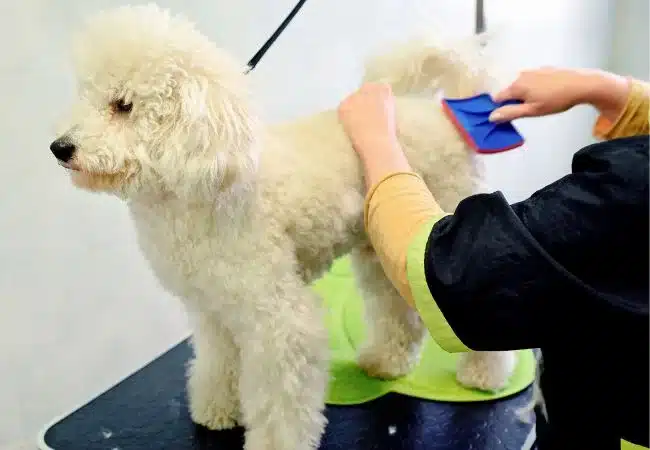
Here are some Poodle hair-brushing tips:
- Brush regularly – Brushing your Poodle’s coat daily is essential to prevent mats and tangles from forming. If left unattended, mats can become painful for the dog and cause skin irritation.
- Use the right brush – Poodle hair is dense and curly, so you need to use a slicker brush or a pin brush that can get through the coat without causing any discomfort to the dog.
- Use short strokes – Use gentle strokes when brushing your Poodle. This helps to avoid causing any discomfort or pain to the dog.
- Start from the bottom – Begin brushing from the bottom of the coat, working your way up. This technique helps to prevent the pulling and breaking of hair.
- Be patient – Poodle grooming takes time, and brushing can be tedious, especially with their curly or wavy hair. Be patient with your dog and take breaks if needed.
- Reward your Poodle – Reward your Poodle with treats and praise after brushing sessions to make the experience more enjoyable for them.
- Visit the vet – If you find that your Poodle’s coat is too tangled or matted, it’s best to seek help from a professional groomer. They have the necessary tools and expertise to handle the situation without causing any harm to the dog.
Bathing
A poodle’s hair is prone to matting, tangling, and collecting dirt, debris, and pests like fleas and ticks. Regular baths help remove dirt, debris, and pests, which helps prevent skin irritation, infections, and allergies.
Here are some tips for your poodle bathing routine
- Brush before bathing – Before bathing your Poodle, brush its coat thoroughly to remove any mats or tangles. This helps to prevent further matting during the bathing process.
- Use the right dog shampoo – Choose a mild, dog-specific shampoo that suits your Poodle’s skin type. Avoid using human shampoos or any other product not specifically designed for dogs, as they can cause skin irritation.
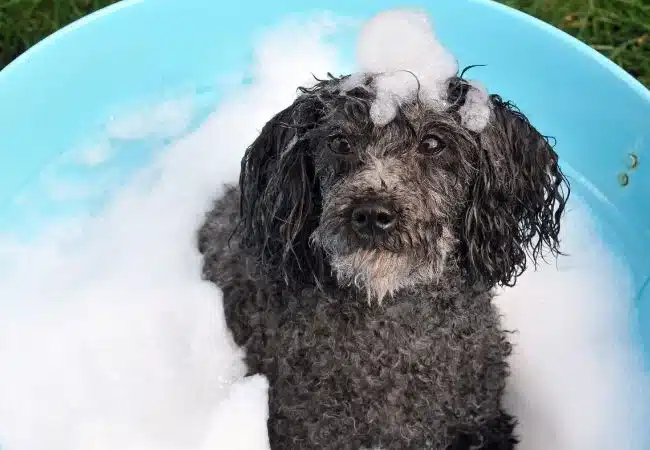
- Use lukewarm water – Use warm water for the bath, as hot water can strip the coat of natural oils and dry out the skin.
- Protect the eyes and ears – Use cotton balls to protect your Poodle’s ears and avoid getting water and shampoo in their eyes.
- Rinse thoroughly – Rinse your Poodle’s coat thoroughly to remove all the shampoo residue. Leftover shampoo can cause skin irritation and itching.
Note: Overbathing a poodle can strip the coat of its natural oils, leading to dry and itchy skin. It’s recommended to bathe your Poodle once every four to six weeks or as your veterinarian or groomer recommends.
Dog Breeds That Have Hair Instead Of Fur
There are other dog breeds than poodles with hair rather than fur. A few more examples of hairy dog breeds are as follows:
- Miniature Schnauzer
- Bichon Fries
- Shih Tzu
- Yorkshire Terrier
- Havanese
- Maltese
Conclusion On “Do Poodles Have Hair Or Fur?”
Poodles have hair instead of fur. Unlike fur, hair grows continuously and requires regular grooming to keep it healthy and tangle-free. Regular brushing, washing, and trimming are necessary to keep a poodle’s coat in good condition. Poodle Owners should also pay attention to their diet and provide the necessary nutrients to maintain a healthy coat. With proper care and grooming, a poodle’s hair can be a beautiful and distinctive feature of this intelligent and loyal breed.
FAQs
Q: Do Poodles have dander?
Poodles are often more allergic-friendly than other dog breeds since they produce less dander. The allergens in dander are a common trigger for those who are prone to allergies.
Q: What kind of fur do Poodles have?
Poodles have a curly, dense, and hypoallergenic coat of hair. The poodle hair is often groomed in various styles, from the classic “puppy cut” to elaborate show cuts.
Q: Are Poodles the only dogs with hair?
No, Poodles are not the only dogs with hair. Some dogs have hair that grows continuously and requires regular grooming, while others have fur that sheds and may require less maintenance.
Q: Do dogs have fur or hair?
Generally speaking, dogs have both fur and hair, and the type and texture of their coat can vary widely depending on their breed and individual characteristics.
Q: Does Poodle hair smell?
Poodles have hair instead of fur, and their coat is dense and curly, which can trap dirt, moisture, and oils from the skin, leading to a stronger odor if not cleaned regularly.
Q: What is the difference between hair and fur?
The main difference is that hair grows continuously and can be trimmed, while fur grows to a certain length and sheds. Hair tends to be finer and smoother, while fur is thicker and coarser.
References
